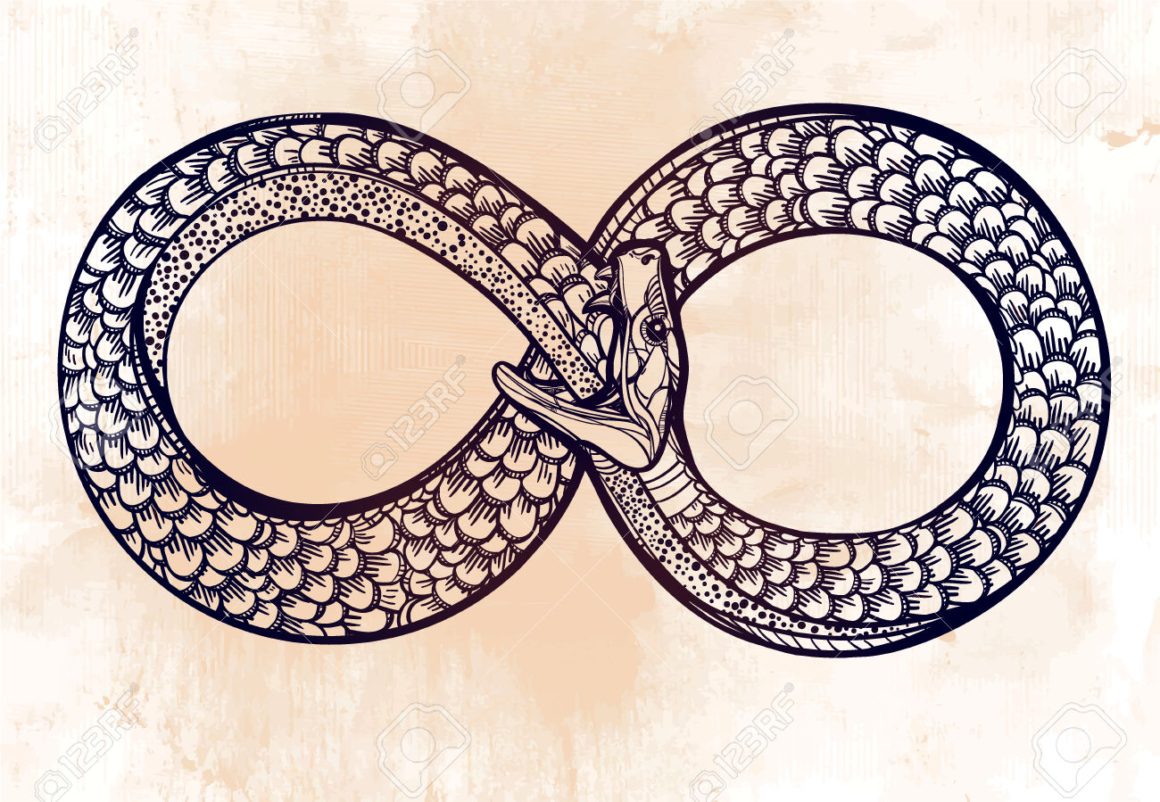Consciousness: The Mind Messing With (sic) the Mind
also Titled: The Brain Versus the Mind
July 4, 2016
Dear Editor,
The July 4, 2016 New York Times article on Consciousness: The Mind Messing with the Mind, by George Johnson is filled with so many conceptual entanglements, that sorting them out is a bit like reaching down into a pit of entwined snakes. It is interesting to start an article by referencing a scientific paper that claims to find no difference between the benefits of anti-depressant drugs and cognitive behavioral therapy, because the results had insufficient power to demonstrate any conclusive findings! Even the authors claim, “Results should be interpreted cautiously given the low strength of evidence for most outcomes.” Nonetheless, the title of this article in the British Medical Journal warranted reconsideration of the age-old existential topics of mind versus brain, and our consciousness of our own existence.
Before I move on to other points raised by Mr. Johnson (one snake at a time), let me begin to paint a picture of a different perspective (perhaps they are not snakes, just entangled ropes). Begin by imagining a single-celled organism. It both moves and senses its environment with that single cell. It feeds, reproduces and makes decisions about which way to go – all with that single cell. When light waves touch the organism, the photons of light cause a chemical change within the organism, and so it moves away from the light in response. And so we say the organism is sensing light. (This is exactly how the human eye works in response to the effect of light on rhodopsin in the cells of our eyes.)
If the organism does not move away from the light or other discomfort in its environment, it will perish. If it moves towards food and nourishment, it will survive. Those who perish don’t reproduce, and those who can sense nourishment and move towards it survive and reproduce. In this way natural selection results in an environment filled with organisms capable of being responsive to their environments. As these sensory abilities provide it with a selective advantage, organisms with a more attuned sensory system evolve. As cells group together, again for an adaptive advantage, sensory abilities become more complex organs such as eyes capable of sensing light waves, and ears which are affected by sound waves. Eventually so much sensory information is coming into the organism from different specialized sense organs that this information needs to be processed through a centralized coordination system. These central coordination systems, referred to as ganglion, are spread throughout the body to coordinate activities in specific regions. Eventually, one of these ganglion grows larger, and is capable of coordinating nearly all of the incoming sensory information, continuously building more and more complex structures for integration of more refined sensory information. We call that structure the brain. So we now have an organism capable of sensing, moving, feeding, and reproducing, but its bigger.
At what point in this evolutionary process of the brain does the organism become conscious? Or is consciousness simply what we call this capacity to sense our environment: the coordinated integration of information from myriad environmental sources, impacting us, creating biochemical changes on the interior functions of our body and altering our behavior? From this perspective, we can begin to untangle Mr. Johnson’s words pertaining to other conceptual “mysteries.” How can no one understand how talk therapy or any other type of behavioral intervention can change our brain biochemistry? This statement by Mr. Johnson ignores the very reason that such a brain chemistry exists in the first place. Is our brain organized to be responsive to very subtle fluctuations in multiple chemical and energetic pathways, only so that at this very recent moment in time, we can bombard it with chemicals similar to other chemicals that are already in our brains/bodies, and call this drug treatment the only scientifically understood treatment? Why are behavioral interventions so “strange” and incomprehensible as Mr. Johnson suggests, when the very system that we are describing exists because it allows us to coordinate our behavior with our environment, by sensing and feeling our way through it. Yes, we can alter these feelings with drugs that artificially simulate what we would feel if we were actually in a pleasurable environment. Or we can learn to make behavioral adjustments that change our environment to one that creates a more comfortable chemical brain state. We can learn to move away from discomfort, and towards nourishment. That is why we have brains. The problem is that when we use drugs, we are bombarding a very sensitive and complex system in a way that renders us less sensitive to the environment around us. In this confusion, we are unable to use the brain the way it was designed, to guide us in action. With drugs, we are dis-empowered from recognizing our own personal role in taking action to improve our environment and our physical condition. Behavioral interventions provide a means of empowerment as we gradually rediscover which way to move, away from discomfort, and towards nourishment, using the sensations of the biochemical shifts that we experience with different behavioral states as a gauge for our actions.
Cognitive Behavioral Therapy, like other forms of talk-therapy before it (Freudian, Jungian, Gestalt, etc.) is an attempt to empower patients to find a frame of mind (biochemical state of the brain/body), that is functional and comfortable. As one talks through different perspectives on one’s life, one can practically feel the shifting state of the brain. Studies of neurochemicals show significant changes in mood regulating neurotransmitters as a result of behavioral interventions. No longer are the comparison of drug therapy and talk therapy radically different or so “strange.” Both are acting on the same system, the neurochemical systems of our brains that provide us with the sensory experience that guides us through our lives. The serpent was just a piece of rope.
As for the next stretch of twine, that of the “mind-body problem,” thank you Descartes. As Mr. Johnson pointed out, there was no such problem before Descartes introduced it in 16411. Aristotle and Plato, as well as Buddhist and Vedic philosophers before them, and even the pantheistic ancient Egyptian cultures all have addressed the nonphysical nature of consciousness. Far be it from me to sum up this concept as a piece of rope – I’d probably hang myself in trying to do so. But where does the science of consciousness meet the experience of consciousness? The science, as Mr. Johnson points out, uses reductionist (“materialistic”) explanations to describe the physical machinery with which we might sense consciousness (or any other sensation within the realm of our experience). The experience of consciousness, however, is full of wonder and awe. It can be amazing and profound. We can be conscious of all sorts of myriad experiences arising from sensations of the universe around us. (Yes, we can even see the stars of distant galaxies). What if it weren’t. What if the experience of sensing our environment was lifeless and dull? What if it was empty and numb? Would we not respond by seeking out nourishment? Would we not move away from such a senseless experience in search of something more comfortable? That or die, for what purpose in living? So to address the question posed by Mr. Johnson, “why all of these processes feel like something,” because if they didn’t we wouldn’t exist. We have poetically summed up the experience of the effect of light photons bleaching rhodopsin in our eyes as the experience of consciousness.
Herping right along, let’s explore Mr. Johnson’s throw-away about mindfulness, where he implies that no one understands how mindfulness (like talk therapy) affects the flow of neurotransmitters in the brain. We have no poorer grasp on how mindfulness affects the flow of neurotransmitters in the brain than we do on how our intention to close our fist causes us to do so. We intend it, and it happens. Like other forms of intended action, such as walking, it may take a few years of practice. But somehow, our intention results in a change. (God forbid I suggest here that altering our consciousness alters our reality). And as scientists are telling us, this change is not only in the biochemistry of our brains, but also in the very structure of our brains. Like working out muscles at the gym, mindfulness practices cause a structural change in our brains, in the direction of whatever we are practicing. And not only have scientists demonstrated changes in the biochemistry and structure of our brains, even our genes are being altered by mindfulness practices. These heritable changes resulting from mindfulness practices will influence the outcome of future generations! I’m beginning to understand why the author cites Dr. Gaziano as saying the brain “…thinks it has magic inside it…And it calls the magic consciousness.” But I’m not satisfied that the serpent is lifeless.
For the final blow addressing the throw-away about mindfulness, I’ll also refer to a publication in a prestigious medical journal (JAMA); this one with significant results based on adequate statistical power to make a conclusion. In this study, Mindfulness-Based Cognitive Therapy was found to have a significantly greater effect on the treatment of depression than standard-of-care treatments such as medication or other forms of psychotherapy. Yes, Mr. Johnson, “Depression can be treated in two (not-so) radically different ways: by altering the brain with chemicals, or by altering the mind by talking to a therapist;” and by practicing meditation. And the practice of meditation, practicing self-awareness through explorations of the experiences of consciousness, is proving to be the most effective healing practice of all!
Unraveling the mysteries of consciousness is an age-old practice, indeed, and for good reason. It seems that those who meditate on consciousness not only have better health, they also come to similar conclusions about the nature of consciousness. It is everywhere and in everything we see, sense, feel and imagine. Regardless of the form of meditation practiced, or the era in human history that one practices, the practice leads to the same experience. The conclusion that consciousness is a part of the nature of the Universe is not such a gap in the explanation of consciousness “where suddenly a miracle seems to occur”? If, as Mr. Johnson quotes, “Every theory proposed for the problem of consciousness has the same degree of demonstrability as divine intervention,” then when do we call the data supporting this conclusion significant, and adopt this perspective as the Gold Standard? Suppose you were to open your eyes one day and see God. And then you were to describe what you saw. People would claim that whenever you get to the end result of perception you have to bring up the concept of God. So I ask you, when you do open your eyes, what exactly do you see? When some open their eyes they see stuff. When another opens their eyes, they see God. Same thing, just different words for it. Now we have come full circle in Mr. Johnson’s article and are back to Buddhist philosophy, the concept of Oneness and that all is God.
Let me ask you Mr. Johnson, when you open your eyes, what do you see? Things? When you tune into the sensations arising in your ears, what do you hear? Sounds? When you explore the experience of your own consciousness, what do you sense? Consciousness? Isn’t the miracle the fact that things, sounds, consciousness exist to be experienced in the first place? Or even that you exist to experience these things? Is your existence a gap, or a miracle? Serpent or rope, your call. The concept of consciousness as a fundamental element of the Universe is not something new that scientists “backed into a cul-de sac” have only recently come up with. The ouroborus of consciousness is as old as recorded history. It is no wonder that it keeps re-emerging, shedding the language of perception from older cultures, and reappearing as a new perception. Consciousness exists as much as you or I. That is why we experience it.
REFERENCE
(1). Descartes, R. (1641) Meditations on First Philosophy, in The Philosophical Writings of René Descartes, trans. by J. Cottingham, R. Stoothoff and D. Murdoch, Cambridge: Cambridge University Press, 1984, vol. 2, pp. 1-62.




